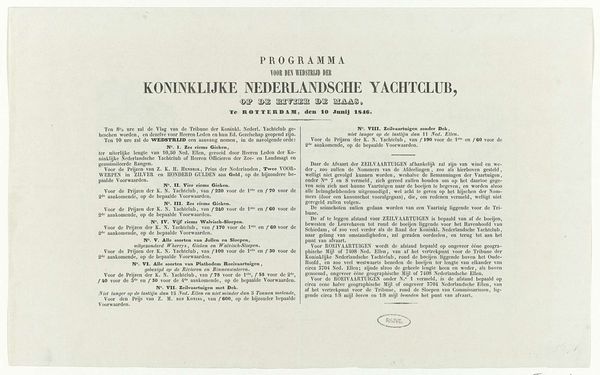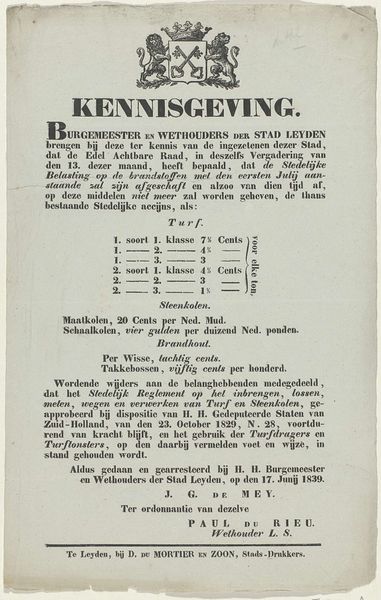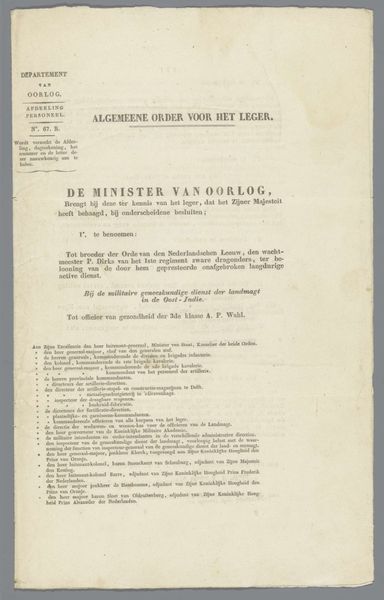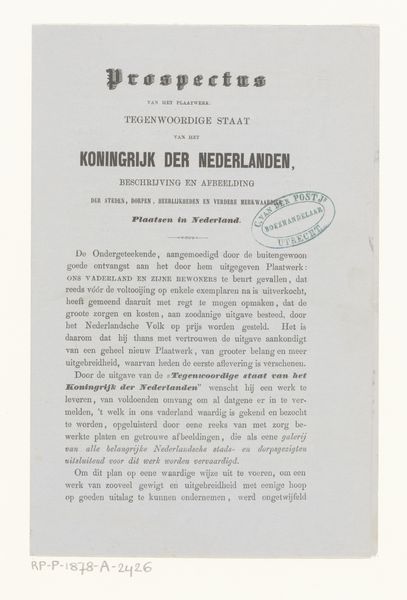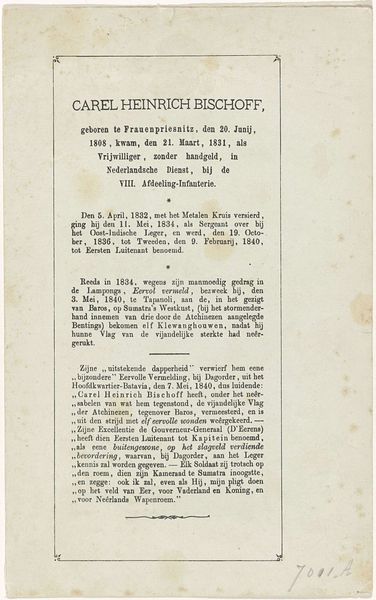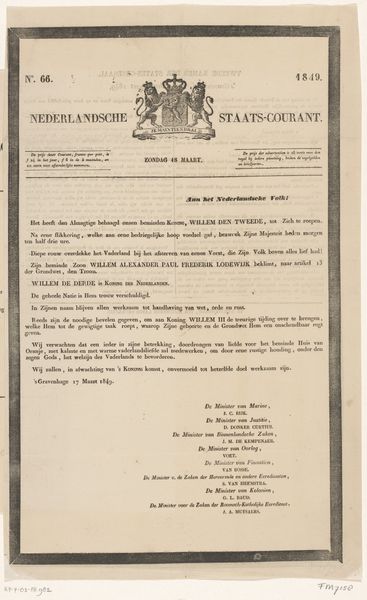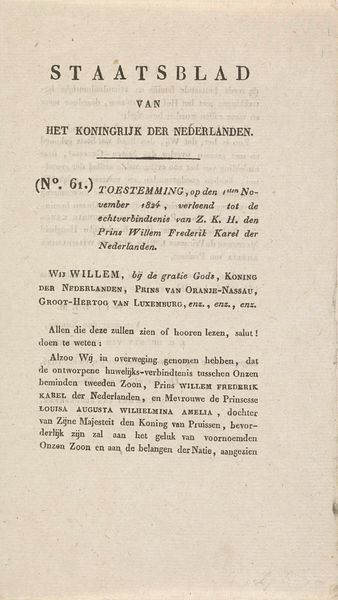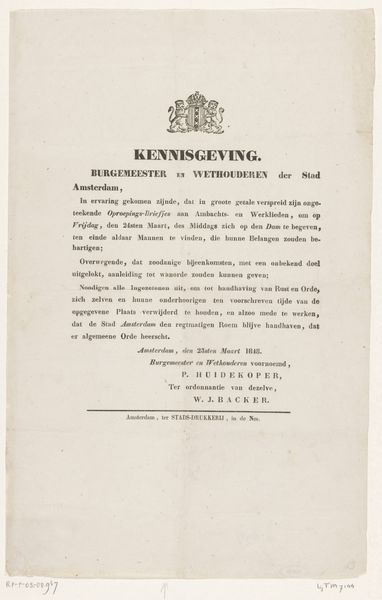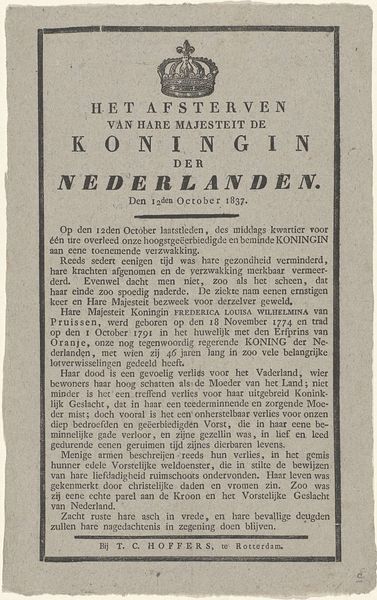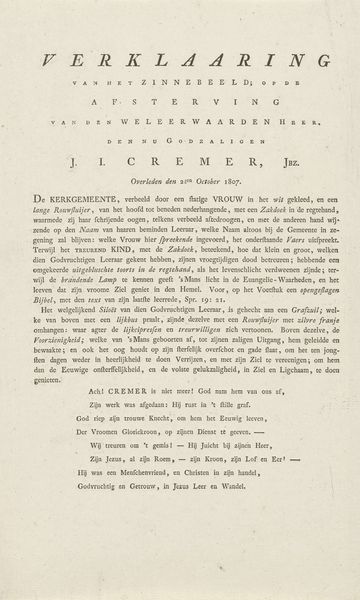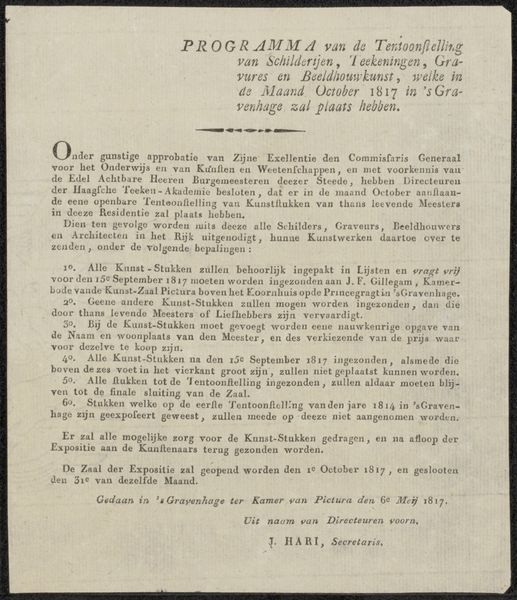
Informatieblad over het geraamte van de walvis in het Koninklijke Paviljoen, 1828 1828 - 1829
0:00
0:00
anonymous
Rijksmuseum
print, paper
#
aged paper
#
still-life-photography
# print
#
old engraving style
#
paper
#
text
#
academic-art
Dimensions: height 250 mm, width 201 mm
Copyright: Rijks Museum: Open Domain
This is a broadside printed in 1828, describing the discovery, preservation, and dissection of a Royal Whale stranded near Ostend. Dominating the text is the image of the whale itself—a symbol freighted with cultural significance. The whale, in this instance, transcends its simple biological form; it is an emblem of the sublime, a leviathan that stirs deep, primal emotions. Consider the biblical narratives of Jonah, swallowed by the whale, enduring a transformative journey in its belly, akin to a womb where death and rebirth converge. This motif recurs in various guises across cultures, from ancient sea monster myths to Melville's "Moby Dick." The whale symbolizes both destruction and salvation, reflecting our complex relationship with nature. It mirrors the psychological depths of our subconscious. The whale, in essence, is not merely a creature of the sea but a mirror reflecting humanity's deepest fears and hopes. It represents cyclical transformation, a perpetual return to origins, embodying the very essence of cultural memory.
Comments
No comments
Be the first to comment and join the conversation on the ultimate creative platform.
